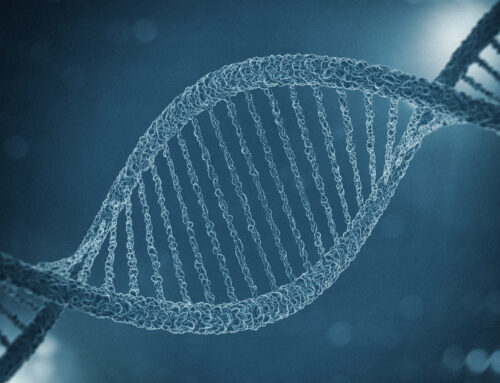
Many people have heard of Tay-Sachs disease, but what have they heard? Some are aware of the connection to Jewish ancestry and the devastation related to diagnosis. However, most don’t know about the history and cause of the disease, or the steps the Jewish community has taken to nearly eliminate it from our population. Community health organizations, like the Sarnoff Center, have provided resources to make this happen.
What is Tay-Sachs Disease?
Babies born with Tay-Sachs Disease experience slow nervous system deterioration, which diminishes cognitive functioning. This is usually seen as the loss of motor skills, vision, hearing, and strength someone had previously developed. Near the end of the 19th century, the researchers Warren Tay and Bernard Sachs worked separately but both contributed to the discovery of the disease. Sachs also noted the prevalence in Jewish populations. Because of the fatality, the search for a cause and a cure was on.
Fast forward to August of 1969, Drs. Okada and O’Brien found the enzyme that babies with Tay-Sachs lack: Hexosaminidase A. It is responsible for breaking down lipids (fat) in the brain and spinal cord. They become toxic if not broken down, which explains the destruction of the nervous system. Tay-Sachs is autosomal and recessive because as long as there is at least one functioning copy of the gene, Hexosaminidase A is produced to remove toxins. The problem arises when there are no enzyme producing copies. This discovery, along with the fact that about 1/30 Ashkenazi Jewish people are carriers (compared to 1/300 of the rest of the population), catalyzed people to do something. The realization of the link to Jewish ancestry led to an understanding in the scientific community that other genetic disorders are more prevalent in other specific populations, too.
So, Tay-Sachs is more common in Jewish populations. What does this mean?
The first community carrier screening event was held in 1971 at a synagogue in Maryland. Trained volunteers and physicians drew blood from over 1,500 people, which revealed if they had a possibility of having a child with Tay-Sachs. For the first time, people had knowledge about personal risk of having affected kids. Other Jewish communities wanted to do something similar.
The number of babies born with Tay-Sachs has reduced over 90% in the last 50 years. The reduction of cases of Tay-Sachs is not due to a cure, as there is not one yet. Carrier frequency in Jewish populations also has not changed. It is due to people being more educated about personal risk and taking the time to learn what they can do for prevention.
How does the Norton & Elaine Sarnoff Center for Jewish Genetics play into all of this?
The Center was founded in 1999 as an educational resource for genetic health risks in the Chicago Jewish population. Screening began shortly after that for only the 4 most common Jewish genetic disorders including Tay-Sachs. That number jumped to 19, then later to about 50. Today, there are around 100 “Jewish” disorders that we know of, and the Sarnoff Center screens for those and other pan-ethnic disorders. One out of four Ashkenazi Jewish people are a carrier for at least one of these.
Since the beginning, we put on community health screening events much like the one in Maryland. A presenter would explain the importance of screening and make sure everyone went through the informed consent process during a dinner, and before leaving they would participate in a blood draw. However, these blood draws are no longer needed because screening can be done with a spit kit from home. Fun and interesting educational resources are much more easily accessible than they once were, so even people without a background in genetics can teach others the importance of awareness!
References:
https://www.jta.org/2017/08/11/united-states/how-the-jews-nearly-wiped-out-tay-sachs


